We Are Now One Year Away From Global Riots, Complex Systems Theorists Say
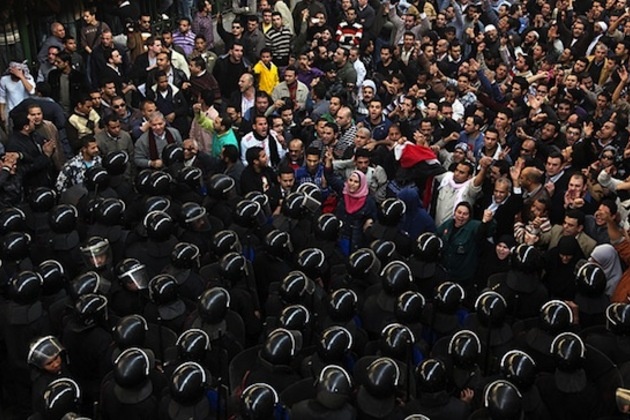 What’s the number one reason we riot? The plausible, justifiable motivations of trampled-upon humanfolk to fight back are many—poverty, oppression, disenfranchisement, etc—but the big one is more primal than any of the above. It’s hunger, plain and simple. If there’s a single factor that reliably sparks social unrest, it’s food becoming too scarce or too expensive. So argues a group of complex systems theorists in Cambridge, and it makes sense.
What’s the number one reason we riot? The plausible, justifiable motivations of trampled-upon humanfolk to fight back are many—poverty, oppression, disenfranchisement, etc—but the big one is more primal than any of the above. It’s hunger, plain and simple. If there’s a single factor that reliably sparks social unrest, it’s food becoming too scarce or too expensive. So argues a group of complex systems theorists in Cambridge, and it makes sense.
In a 2011 paper, researchers at the Complex Systems Institute unveiled a model that accurately explained why the waves of unrest that swept the world in 2008 and 2011 crashed when they did. The number one determinant was soaring food prices. Their model identified a precise threshold for global food prices that, if breached, would lead to worldwide unrest.
The MIT Technology Review explains how CSI’s model works: “The evidence comes from two sources. The first is data gathered by the United Nations that plots the price of food against time, the so-called food price index of the Food and Agriculture Organisation of the UN. The second is the date of riots around the world, whatever their cause.” Plot the data, and it looks like this
Pretty simple. Black dots are the food prices, red lines are the riots. In other words, whenever the UN’s food price index, which measures the monthly change in the price of a basket of food commodities, climbs above 210, the conditions ripen for social unrest around the world. CSI doesn’t claim that any breach of 210 immediately leads to riots, obviously; just that the probability that riots will erupt grows much greater. For billions of people around the world, food comprises up to 80% of routine expenses (for rich-world people like you and I, it’s like 15%). When prices jump, people can’t afford anything else; or even food itself. And if you can’t eat—or worse, your family can’t eat—you fight.
But how accurate is the model? An anecdote the researchers outline in the report offers us an idea. They write that “on December 13, 2010, we submitted a government report analyzing the repercussions of the global financial crises, and directly identifying the risk of social unrest and political instability due to food prices.” Four days later, Mohamed Bouazizi set himself on fire as an act of protest in Tunisia. And we all know what happened after that.
Today, the food price index is hovering around 213, where it has stayed for months—just beyond the tip of the identified threshold. Low corn yield in the U.S., the world’s most important producer, has helped keep prices high.
“Recent droughts in the mid-western United States threaten to cause global catastrophe,” Yaneer Bar-Yam, one of the authors of the report, recently told Al Jazeera. “When people are unable to feed themselves and their families, widespread social disruption occurs. We are on the verge of another crisis, the third in five years, and likely to be the worst yet, capable of causing new food riots and turmoil on a par with the Arab Spring.”
Yet the cost of food hasn’t quite yet risen to the catastrophic levels reached last year. Around the time of the riots cum-revolutions, we saw the food price index soar through 220 points and even push 240. This year, we’ve pretty consistently hovered in the 210-216 range—right along the cusp of danger. But CSI expects a perilous trend in rising food prices to continue. Even before the extreme weather scrambled food prices this year, their 2011 report predicted that the next great breach would occur in August 2013, and that the risk of more worldwide rioting would follow. So, if trends hold, these complex systems theorists say we’re less than one year and counting from a fireball of global unrest.
But the reality is that such predictions are now all but impossible to make. In a world well-warmed by climate change, unpredictable, extreme weather events like the drought that has consumed 60% of the United States and the record heat that has killed its cattle are now the norm. Just two years ago, heat waves in Russia crippled its grain yield and dealt a devastating blow to global food markets—the true, unheralded father of the Arab Spring was global warming, some say.
And it’s only going to get worse and worse and worse. Because of climate change-exacerbated disasters like these, “the average price of staple foods such as maize could more than double in the next 20 years compared with 2010 trend prices,” a new report from Oxfam reveals. That report details how the poor will be even more vulnerable to climate change-induced food price shocks than previously thought. After all, we’ve “loaded the climate dice,” as NASA’s James Hansen likes to say, and the chances of such disasters rolling out are greater than ever.
This all goes to say that as long as climate change continues to advance—it seems that nothing can stop that now—and we maintain a global food system perennially subject to volatile price spikes and exploitation from speculators, without reform, our world will be an increasingly restive one. Hunger is coming, and so are the riots.
Al Qaeda weapons expert says U.S. ambassador to Libya killed by lethal injection
An al Qaeda terrorist stated in a recent online posting that U.S. Ambassador to Libya Chris Stevens was killed by lethal injection after plans to kidnap him during the Sept. 11, 2012 terror attack in Benghazi went bad.
The veracity of the claim made by Abdallah Dhu-al-Bajadin, who was identified by U.S. officials as a known weapons experts for al Qaeda, could not be determined. However, U.S. officials have not dismissed the terrorist’s assertion.
An FBI spokeswoman indicated the bureau was aware of the claim but declined to comment because of the bureau’s ongoing investigation into the Benghazi attack.
“While there is a great deal of information in the media and on the Internet about the attack in Benghazi, the FBI is not in a position at this time to comment on anything specific with regard to the investigation,” Kathy Wright, the FBI spokeswoman, said.
A State Department spokesman also had no comment.
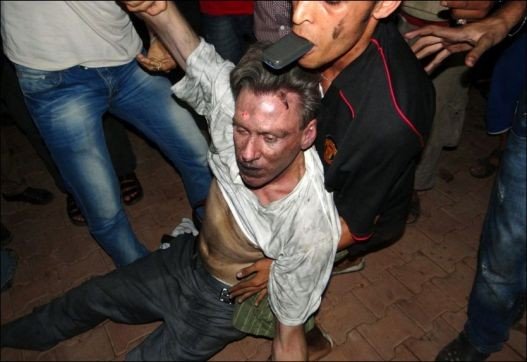 The FBI is investigating the death of Stevens, State Department information officer Sean Smith, and former Navy SEALs Tyrone Woods and Glen Doherty. They were killed in the attack U.S. officials say was carried out by an al Qaeda-linked group known as Ansar al Sharia.
The FBI is investigating the death of Stevens, State Department information officer Sean Smith, and former Navy SEALs Tyrone Woods and Glen Doherty. They were killed in the attack U.S. officials say was carried out by an al Qaeda-linked group known as Ansar al Sharia.
A State Department Accountability Review Board report and an interim House Republican report on the attack gave no cause of death for Stevens, whose body was recovered by local Libyans in the early morning hours of Sept. 12.
The House report, “Interim Progress Report for the House Republican Conference,” said “Libyan doctors tried unsuccessfully to resuscitate Ambassador Stevens upon his arrival at the hospital.”
To date, no official cause of death for Stevens has been made public, although it was reported that a Libyan doctor who examined Stevens said he died from apparent smoke inhalation and related asphyxiation.
Video and photos of Stevens being handled by a mob in Benghazi were posted on the Internet. It is not clear from the images whether he was dead or alive at the time.
However, according to the March 14 posting on an al Qaeda-linked website, Abdallah Dhu-al-Bajadin, the al Qaeda weapons expert, stated that Stevens was given a lethal injection and that the injection was overlooked during the medical autopsy.
According to Dhu-al-Bajadin, “the plan was based on abduction and exchange of high-level prisoners.”
“However, the operation took another turn, for a reason God only knows, when one of the members of the jihadist cell improvised and followed Plan B,” he wrote on the prominent jihadist web forum Ansar al-Mujahideen Network.
Dhu-al-Bajadin’s claim of assassination also stated that it had been copied to the Ansar al-Mujahidin website from the closed and al Qaeda-accredited website Shumukh al-Islam. That site is only open to members and was initially posted by a member identified as Adnan Shukri for Dhu-al-Bajadin.
The reference to Shumukh al Islam has boosted the credibility of the claim among some U.S. intelligence analysts.
A western intelligence official said Dhu-al-Bajadin is a well-known jihadist weapons experts and a key figure behind a magazine called Al Qaeda Airlines.
According to this official, intelligence analysts believe that Dhu-al-Bajadin’s claim of assassination by lethal injection appears in part aimed at putting pressure on the U.S. government over its handling of the Benghazi attack.
The article did not say what substance was used in the lethal injection. It also stated that the State Department had come under criticism for not providing adequate security in Benghazi prior to the attack.
Dhu-al-Bajadin also said he had further details of the attack and the assassination but would not reveal them in the posting.
The Washington Free Beacon obtained a copy of the translation of Dhu-al-Bajadin’s posting in Arabic.
The article stated that use of lethal injection is done “more than one place in the human body that autopsy doctors ignore when they see that the symptoms are similar to another specific and common illness.”
“Anyone who studied the art of silent assassination that spies applied during the Cold War would easily identify these parts of the body,” he said.
Dhu-al-Bajadin also stated that he was discussing the assassination of Stevens’ death months later because “the cell” behind “the infiltrative and secret operation is now completely safe from intelligence bureaus.”
The FBI last month disclosed it was searching for five men linked to the Sept. 11 Benghazi attack and posted video and photos of three men wanted in connection with the attacks.
“The grainy still images, taken from surveillance video, show three men who may be able to provide information to help the FBI’s larger probe into the attacks that resulted in the deaths of four Americans, including the U.S. Ambassador to Libya,” the FBI said in a statement.
The FBI opened a webpage in November as part of an effort to solicit information on the attack.
Dhu-al-Bajadin did not disclose details of the “turn” in events that prompted Stevens’ assassination. However, he may have been referring to the armed security team encountered by the terrorists who went to the diplomatic compound from a nearby CIA office within 25 minutes of the start of the attack. The security team killed or wounded many of the dozens of terrorists at the diplomatic compound, U.S. officials have said.
The House report said the security team “repelled sporadic gunfire and [rocket-propelled grenade] fire and assembled all other U.S. personnel at the facility. Officers retrieved the body of Mr. Smith but did not find Ambassador Stevens.”
The Obama administration is under increasing pressure from congressional Republicans over its handling of the Benghazi attack. Several congressional committees are investigating the attack.
The White House has declined so far to answer many questions about its response to the attack, such as what was the president’s response to it, and why no military rescue operation was ordered.
Former Defense Secretary Leon Panetta and Gen. Martin Dempsey, the chairman of the Joint Chiefs of Staff, testified before Congress earlier this year that the president designated authority for handling the attack to them.
The attack took place during the final weeks of Obama’s presidential campaign and it is likely that political campaign and White House officials sought to play down the attack to avoid upsetting his reelection bid.
Both Panetta and Dempsey said there wasn’t enough time to mount a rescue operation, as military units were not close enough to respond in time.
However, critics have said the assessment by Panetta and Dempsey could not be accurate since they could not have known the full scope of the terrorist attack at the time or how long it would continue.
Dhu-al-Bajadin concluded the message by warning that “two jihad fronts” are now open in the Levant and in Africa and warned “we are preparing to open two other fronts soon.”
A U.S. official said Dhu-al-Bajadin is considered a serious threat and in earlier writings indicated he had access to inside information from al Qaeda.
Dhu-al Bajadin claimed in July 2012 in another online article that al Qaeda was behind the killing of Gareth Williams, an employee of Britain’s electronic spy service GCHQ who was working for the Secret Intelligence Service, or MI6. Williams was found dead in suspicious circumstances at a safe house in Pimlico, London, Aug. 23, 2010. His death was ruled “unnatural” and likely criminal related.
On U.S. intelligence reports and testimony that al Qaeda is severely weakened since 2001, Dhu-al-Bajadin stated “within months the world will be stunned by the opening of a new front in the global war between the Islamic ummah [Muslims worldwide] and the Zionist-Crusader campaign.”
“And if your reports state that al Qaeda is dangerous, we will strike you on your own land with operations that will awe your security experts,” he stated. “We will be more dangerous than you might expect.”
The U.S. Northern Command recently warned that terrorists were planning an attack on the United States, but details of the warning could not be learned.
The posting by Dhu-al-Bajadin also said the next issue of the Al Qaeda Airlines magazine would be published.
That issue appeared online weeks later in April and provided detailed plans on how to produce and disperse deadly concentrations of hydrogen cyanide in public places. It called the improvised cyanide-producing device “Al Mubtakar al-Farid,” Arabic for “The unique innovation.”
The instructions were issued in both English and Arabic and urged terrorists to conduct “lone wolf” attacks using the chemical weapons.
The al Qaeda publication Inspire was used by the two Boston Marathon bombing suspects in learning how to fashion the pressure-cooker explosives used in the April attack on the sporting event.
The latest Al Qaeda Airlines issue stated that the terror group once planned to use an improvised poison gas attack on the New York subway but the attack was canceled at the last minute.
The article suggested that terrorists pose as maintenance workers and release cyanide gas through the ventilation system of office buildings or by remote detonation of gas-filled bombs.
Suggested targets included nightclubs, schools, churches and youth clubs, and large office buildings.
The United States was mentioned as a prime target for the attacks. The article also included images of Maj. Nidal Hasan, the Islamist shooter charged in the Fort Hood massacre.
Dhu-al-Bajadin has said the Al Qaeda Airlines publication is not solely focused on aviation but was chosen as a way to instill fear in the enemy.
The 25 Rules of Disinformation
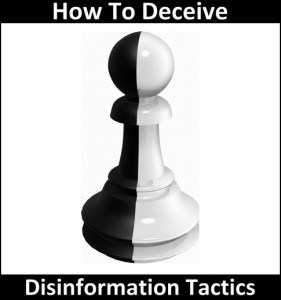
From Twenty-Five Ways To Suppress Truth: The Rules of Disinformation (Includes The 8 Traits of A Disinformationalist) by H. Michael Sweeney. These 25 rules are everywhere in media, from political debates, to television shows, to comments on a blog
1. Hear no evil, see no evil, speak no evil. Regardless of what you know, don’t discuss it — especially if you are a public figure, news anchor, etc. If it’s not reported, it didn’t happen, and you never have to deal with the issues.
2. Become incredulous and indignant. Avoid discussing key issues and instead focus on side issues which can be used show the topic as being critical of some otherwise sacrosanct group or theme. This is also known as the “How dare you!” gambit.
3. Create rumor mongers. Avoid discussing issues by describing all charges, regardless of venue or evidence, as mere rumors and wild accusations. Other derogatory terms mutually exclusive of truth may work as well. This method works especially well with a silent press, because the only way the public can learn of the facts are through such “arguable rumors”. If you can associate the material with the Internet, use this fact to certify it a “wild rumor” which can have no basis in fact.
4. Use a straw man. Find or create a seeming element of your opponent’s argument which you can easily knock down to make yourself look good and the opponent to look bad. Either make up an issue you may safely imply exists based on your interpretation of the opponent/opponent arguments/situation, or select the weakest aspect of the weakest charges. Amplify their significance and destroy them in a way which appears to debunk all the charges, real and fabricated alike, while actually avoiding discussion of the real issues.
5. Sidetrack opponents with name calling and ridicule. This is also known as the primary attack the messenger ploy, though other methods qualify as variants of that approach. Associate opponents with unpopular titles such as “kooks”, “right-wing”, “liberal”, “left-wing”, “terrorists”, “conspiracy buffs”, “radicals”, “militia”, “racists”, “religious fanatics”, “sexual deviates”, and so forth. This makes others shrink from support out of fear of gaining the same label, and you avoid dealing with issues.
6. Hit and Run. In any public forum, make a brief attack of your opponent or the opponent position and then scamper off before an answer can be fielded, or simply ignore any answer. This works extremely well in Internet and letters-to-the-editor environments where a steady stream of new identities can be called upon without having to explain criticism reasoning — simply make an accusation or other attack, never discussing issues, and never answering any subsequent response, for that would dignify the opponent’s viewpoint.
7. Question motives. Twist or amplify any fact which could so taken to imply that the opponent operates out of a hidden personal agenda or other bias. This avoids discussing issues and forces the accuser on the defensive.
8. Invoke authority. Claim for yourself or associate yourself with authority and present your argument with enough “jargon” and “minutiae” to illustrate you are “one who knows”, and simply say it isn’t so without discussing issues or demonstrating concretely why or citing sources.
9. Play Dumb. No matter what evidence or logical argument is offered, avoid discussing issues with denial they have any credibility, make any sense, provide any proof, contain or make a point, have logic, or support a conclusion. Mix well for maximum effect.
10. Associate opponent charges with old news. A derivative of the straw man usually, in any large-scale matter of high visibility, someone will make charges early on which can be or were already easily dealt with. Where it can be foreseen, have your own side raise a straw man issue and have it dealt with early on as part of the initial contingency plans. Subsequent charges, regardless of validity or new ground uncovered, can usually them be associated with the original charge and dismissed as simply being a rehash without need to address current issues — so much the better where the opponent is or was involved with the original source.
11. Establish and rely upon fall-back positions. Using a minor matter or element of the facts, take the “high road” and “confess” with candor that some innocent mistake, in hindsight, was made — but that opponents have seized on the opportunity to blow it all out of proportion and imply greater criminalities which, “just isn’t so.” Others can reinforce this on your behalf, later. Done properly, this can garner sympathy and respect for “coming clean” and “owning up” to your mistakes without addressing more serious issues.
12. Enigmas have no solution. Drawing upon the overall umbrella of events surrounding the crime and the multitude of players and events, paint the entire affair as too complex to solve. This causes those otherwise following the matter to begin to loose interest more quickly without having to address the actual issues.
13. Alice in Wonderland Logic. Avoid discussion of the issues by reasoning backwards with an apparent deductive logic in a way that forbears any actual material fact.
14. Demand complete solutions. Avoid the issues by requiring opponents to solve the crime at hand completely, a ploy which works best for items qualifying for rule 10.
15. Fit the facts to alternate conclusions. This requires creative thinking unless the crime was planned with contingency conclusions in place.
16. Vanishing evidence and witnesses. If it does not exist, it is not fact, and you won’t have to address the issue.
17. Change the subject. Usually in connection with one of the other ploys listed here, find a way to side-track the discussion with abrasive or controversial comments in hopes of turning attention to a new, more manageable topic. This works especially well with companions who can “argue” with you over the new topic and polarize the discussion arena in order to avoid discussing more key issues.
18. Emotionalize, Antagonize, and Goad Opponents. If you can’t do anything else, chide and taunt your opponents and draw them into emotional responses which will tend to make them look foolish and overly motivated, and generally render their material somewhat less coherent. Not only will you avoid discussing the issues in the first instance, but even if their emotional response addresses the issue, you can further avoid the issues by then focusing on how “sensitive they are to criticism”.
19. Ignore proof presented, demand impossible proofs. This is perhaps a variant of the “play dumb” rule. Regardless of what material may be presented by an opponent in public forums, claim the material irrelevant and demand proof that is impossible for the opponent to come by (it may exist, but not be at his disposal, or it may be something which is known to be safely destroyed or withheld, such as a murder weapon). In order to completely avoid discussing issues may require you to categorically deny and be critical of media or books as valid sources, deny that witnesses are acceptable, or even deny that statements made by government or other authorities have any meaning or relevance.
20. False evidence. Whenever possible, introduce new facts or clues designed and manufactured to conflict with opponent presentations as useful tools to neutralize sensitive issues or impede resolution. This works best when the crime was designed with contingencies for the purpose, and the facts cannot be easily separated from the fabrications.
21. Call a Grand Jury, Special Prosecutor, or other empowered investigative body. Subvert the (process) to your benefit and effectively neutralize all sensitive issues without open discussion. Once convened, the evidence and testimony are required to be secret when properly handled. For instance, if you own the prosecuting attorney, it can insure a Grand Jury hears no useful evidence and that the evidence is sealed an unavailable to subsequent investigators. Once a favorable verdict (usually, this technique is applied to find the guilty innocent, but it can also be used to obtain charges when seeking to frame a victim) is achieved, the matter can be considered officially closed.
22. Manufacture a new truth. Create your own expert(s), group(s), author(s), leader(s) or influence existing ones willing to forge new ground via scientific, investigative, or social research or testimony which concludes favorably. In this way, if you must actually address issues, you can do so authoritatively.
23. Create bigger distractions. If the above does not seem to be working to distract from sensitive issues, or to prevent unwanted media coverage of unstoppable events such as trials, create bigger news stories (or treat them as such) to distract the multitudes.
24. Silence critics. If the above methods do not prevail, consider removing opponents from circulation by some definitive solution so that the need to address issues is removed entirely. This can be by their death, arrest and detention, blackmail or destruction of their character by release of blackmail information, or merely by proper intimidation with blackmail or other threats.
25. Vanish. If you are a key holder of secrets or otherwise overly illuminated and you think the heat is getting too hot, to avoid the issues, vacate the kitchen.
Source: vigilantcitizen

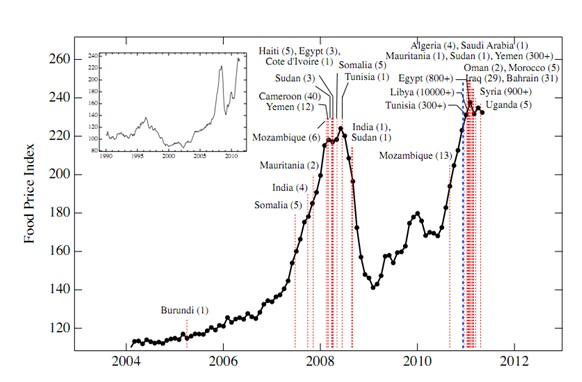
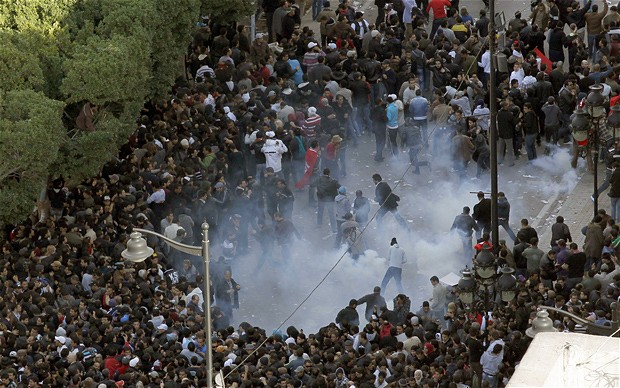
 Enhancement for Bodies and Minds
Enhancement for Bodies and Minds LifeLink
LifeLink Reinventing the Fountain of Youth
Reinventing the Fountain of Youth When You're Not Looking For The Exit
When You're Not Looking For The Exit